
Pink lady’s slipper orchids, our state wildflower, are blooming a little early this year. They usually bloom when ox-eye daisies and lupines bloom but this year they were a bit earlier than both. And there are fewer of them. Where I often find a dozen in bloom this year I’m finding only two or three. This photo shows five or six plants with only one blooming, and that seems to be the way it has been going in this area. I have a feeling the lack is connected to the past two summers of drought; so dry there was hardly a mushroom to be seen. That’s important, because these orchids depend on a soil borne Rhizoctonia fungus. This year so far we’ve seen what I would call average rainfall, so maybe that will mean more blooms next summer.

When plants are weakened by drought they are less likely to bloom prolifically but life is a circle and the woods will surely be full of them again in the future. The blossoms on pink lady’s slippers are especially beautiful with their darker, vein like insect guide lines that will guide the insect, hopefully a bumblebee, right to the slit seen here at the top of the pouch. Once inside the bee finds there is only one way out, which is through the top of the blossom. While squeezing through the hole in the top it has to brush against the sticky stigma and it leaves behind any pollen it might have collected from other flowers. It will also have picked up pollen from this flower, ready for transport to another. It all seems complicated but orchids are the most highly evolved of all plants and their method works; I see quite a few seed pods in late summer.

Shy little bunchberries seem to be blooming well this year. They are associated with wood and grow on stumps, logs, and even live trees. Even when they appear to be growing on the ground there is usually an old log or something made of wood beaneath them. Why this is isn’t known but it is thought that they must receive nutrients from the wood they grow on. Bunchberry is in the dogwood family and is also called creeping dogwood or bunchberry dogwood. White bracts surround the actual flowers, which are greenish and very small. The entire flower cluster with bracts and all is often no bigger than an inch and a half across. If all goes well the flowers will become a bunch of bright red berries.
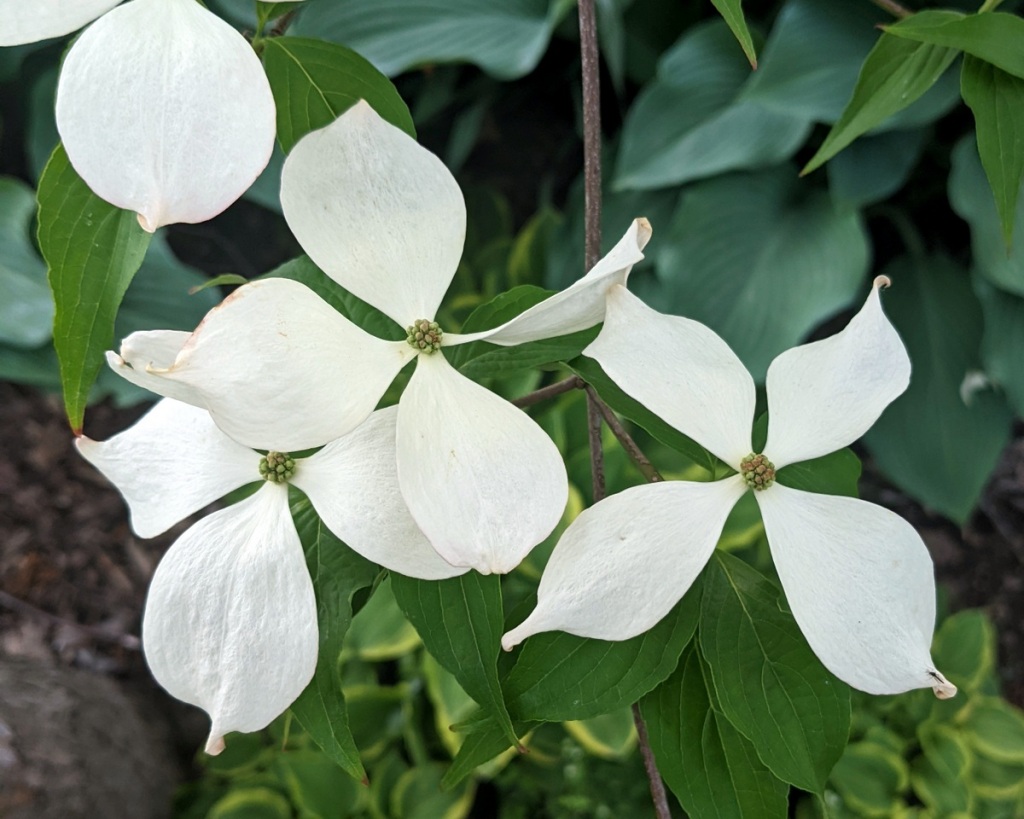
When you see dogwoods flowering you know it’s time to look for bunchberries, because being in the same family, they almost always bloom at the same time. Once again on this tree there are large white bracts surrounding the much smaller flowers in the center, just as we saw on the bunchberry.
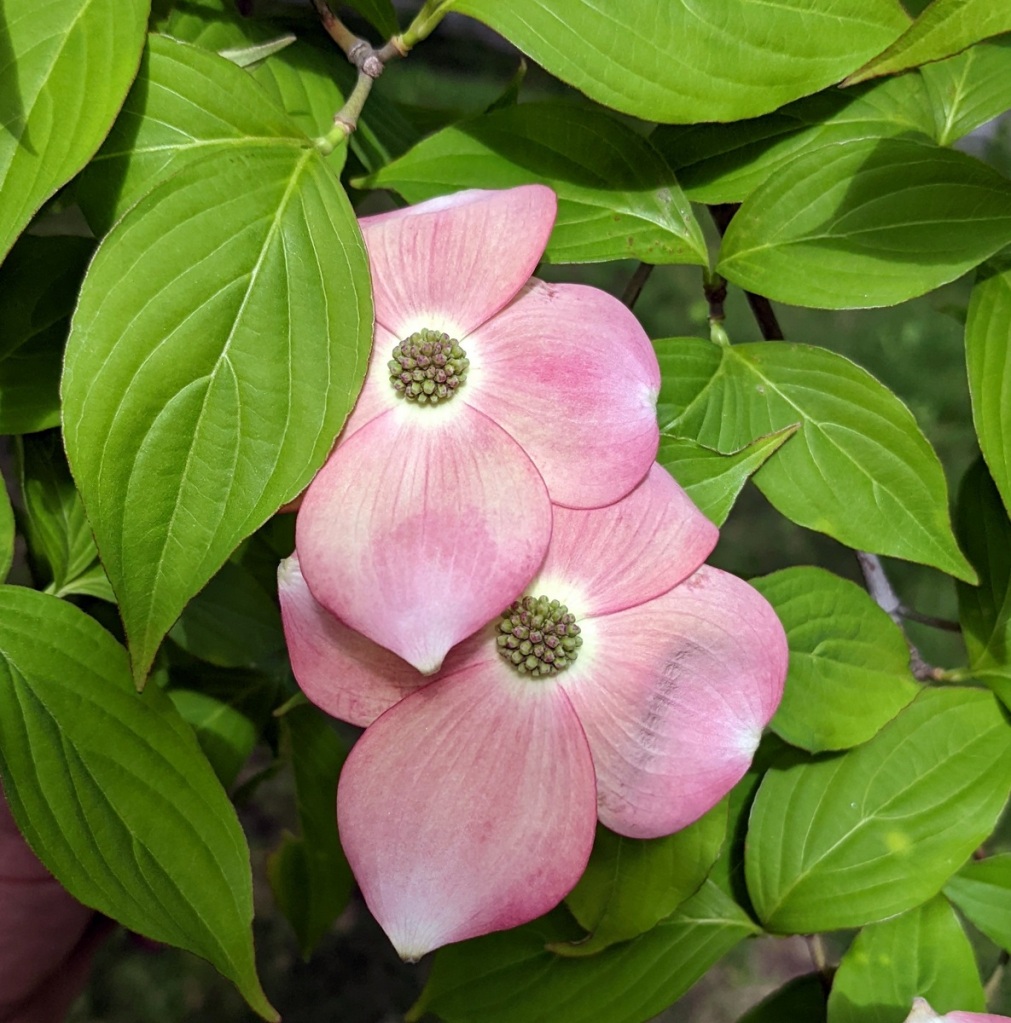
Some dogwoods were hit hard by the freeze we had on May 18th, as these blossoms show. The leaves don’t seem to have been bothered though, so the trees should do okay. In certain areas many trees like catalpla and black locust had all their leaves and flower buds killed or damaged by the freeze so we’ll have to wait and see how they recover. I should be seeing catalpa trees blossoming all over right now and I haven’t seen even one.
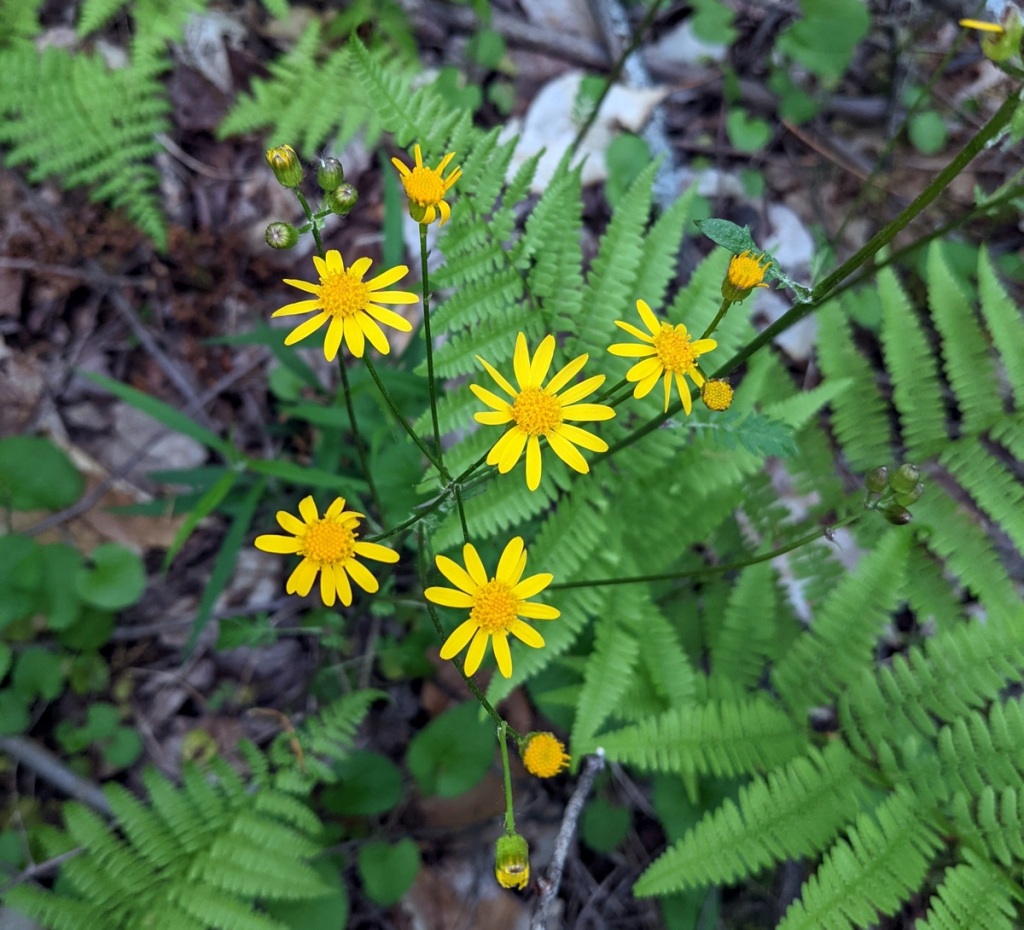
Golden ragwort is in the aster family and is considered our earliest blooming aster. It doesn’t mind growing in wet soil and tolerates shade so it always seems like a beacon with its bright yellow flowers shining in the dappled shade I find it in. It isn’t a common plant so I’m usually surprised by it as I was this time when I found it in a place I’ve walked by hudreds of times. It seems to be a plant that “gets around.” You’ll see it in a spot for a year or even three and then it will disappear, only to be found in a different spot.

Tatarian honeysuckle is one of the prettiest of the invasive honeysuckles, in my opinion. It is originally from Siberia and other parts of eastern Asia and in the fall its pretty pink flowers become bright red berries. Of course, birds eat the berries and the plant spreads quickly.

Morrow’s Honeysuckle is another invasive honeysuckle. It has sweetly fragrant, pretty white flowers that turn yellow with age. Unfortunately, it spreads by its berries like Tatarian honeysuckle and it can form dense thickets and outcompete native shrubs. It seems more aggressive than Tatarian honeysuckle and I see it far more often.
It’s a shame to have so many invasive plants and I would never make light of it, but the truth is once the genie is out of the bottle from what I’ve seen, it is nearly impossible to put it back in. Invasive honeysuckles have been around since I was just a small boy and I know that the only way to truly be rid of them is to dig them up and pull all the seedlings. But I can attest to the fact that digging up a honeysuckle is very hard work, and who will do it?
Does that mean we shouldn’t fight invasives? No, what I’m saying is, maybe Instead of setting out to “rid the world of the scourge” we should just be at peace with whatever we can accomplish. A lot of littles can add up to a lot. People seem ready to get together and “do the big thing” and then when they see more invasives growing where they’ve done so much hard work they get discouraged and give up. This is not the way to win. Everyone doing what they can when they can is the way to win.

An eastern swallowtail butterfly appeared to prefer the white Morrow’s honeysuckle but there were no tatarian honeysuckles in the area, so that probably isn’t a fair assesment. I doubt it has any real preference.

I hadn’t seen any dragonflies yet this spring so I went to Hancock one day, back to the nature camp I once worked for, just to take a walk and see what I could see. There is a pond there and there used to be so many dragonflies I had them land on me and even fly alongside the tractor when I mowed the meadow. They did that because they knew the tractor was going to scare up insects for them to eat. That’s when I discovered that dragonflies are not only smart but they must have at least a hint of a memory.

I spent some time at the pond hoping to see dragonflies, but didn’t see any. That’s because they were all here on this dirt road, apparently. Google lens says this one is a lancet clubtail, which likes to rest on gravel roads, so that fit. Two things bother me about that identification though; eye color, and the photo isn’t good enough to see the “tail.” If I understand what I’ve read this dragonfly’s eyes should be blue or gray, not brown. The color might just be caused by the harsh lighting though, because I’ve had trouble finding dragonflies of any kind with brown eyes online.
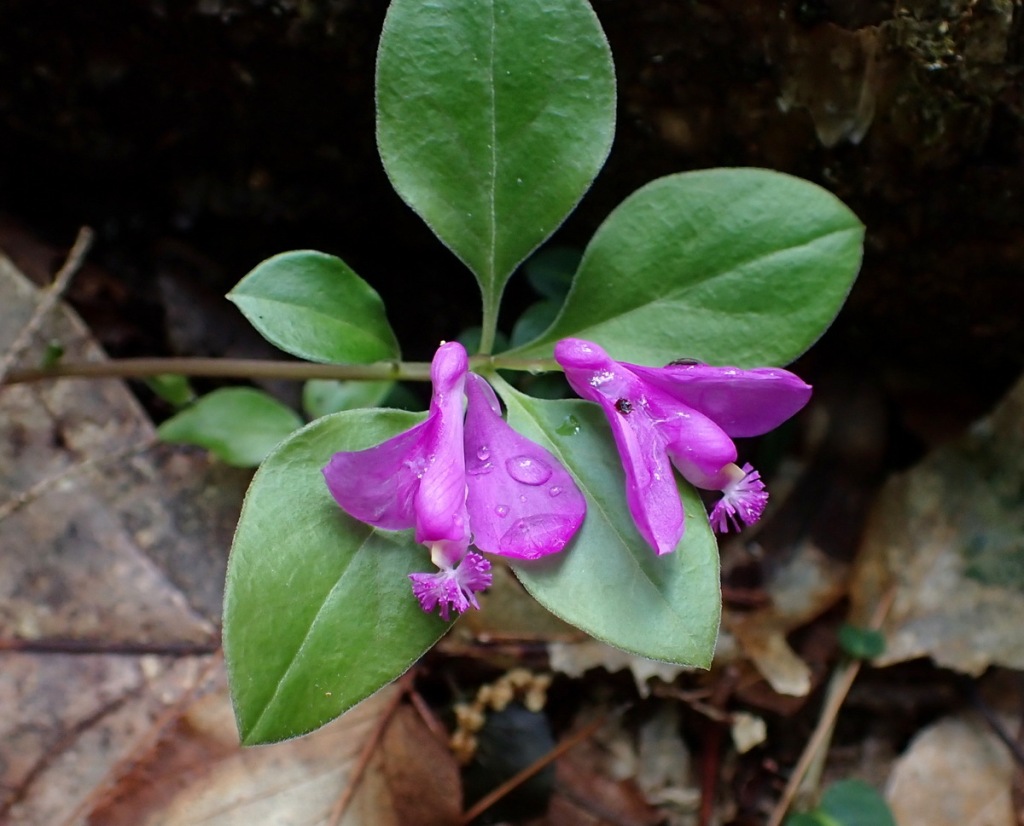
There were lots of fringed polygala at the camp when I worked there but I didn’t see many this time so I went to another spot and found these. These plants are in the milkwort family and aren’t really common but if they like a spot they can grow into a good size colony. I could explain how they’re pollinated but it’s quite a convoluted process so I’ll just ask that you trust me; they are pollinated. And it all starts when a heavy enough insect lands on that little fringe.
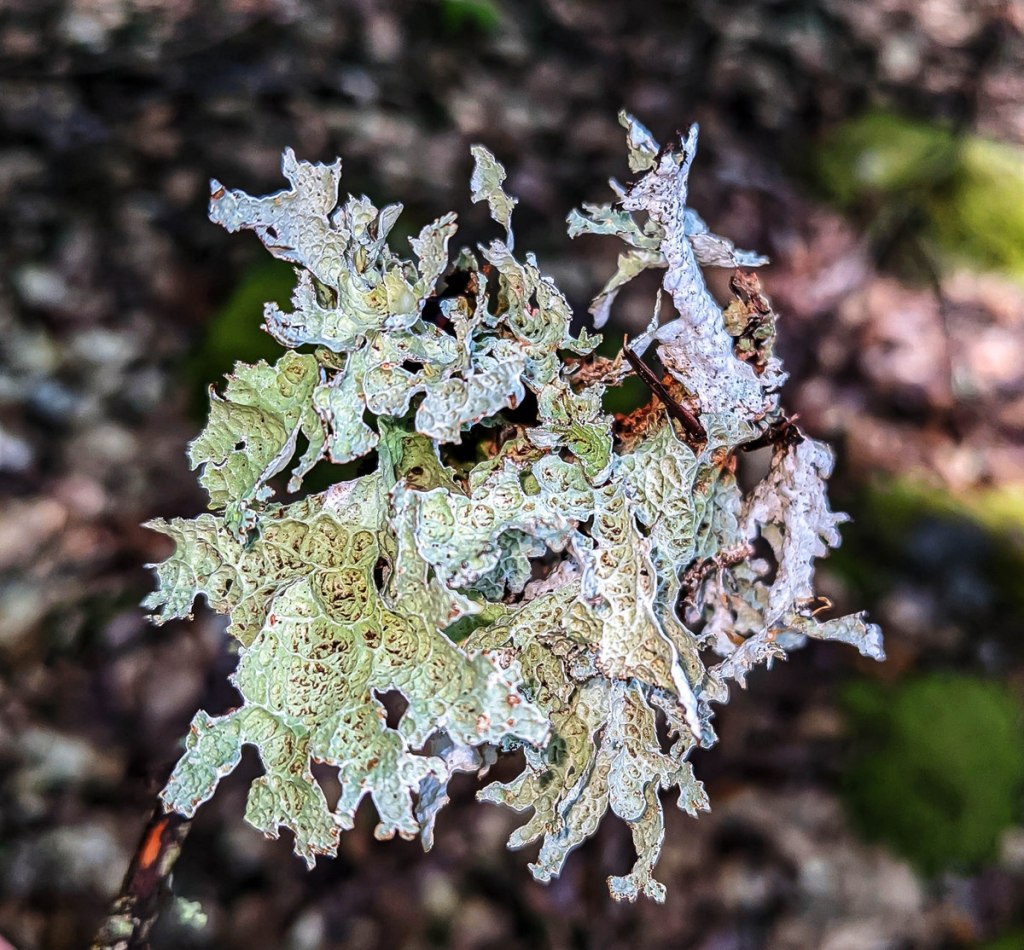
When I was looking for winged polygayla flowers I found a rag lichen. Despite a recent rain it was quite dry and, as is often the case with lichens, most of its color had changed as it dried. It wasn’t its color that I was interested in though; it was its amazing net like texture. This is the first time I had seen this lichen so I spent quite a lot of time getting photos of it. If you click on the photo you’ll be better able to see what I mean about its texture.
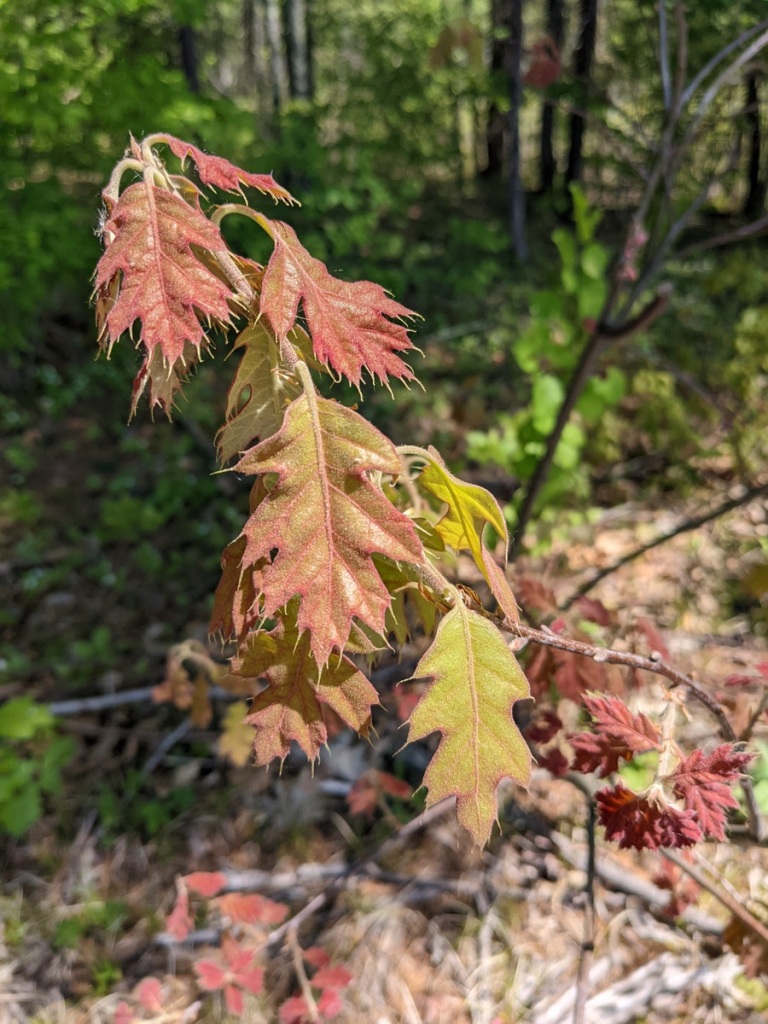
I thought I’d show one more shot of new spring oak leaves. They’re probably the last I’ll see this year. This shot shows how they finally turn green while still wearing their velvet coats. Once green and photosynthesizing they’ll lose their velvet and shine.
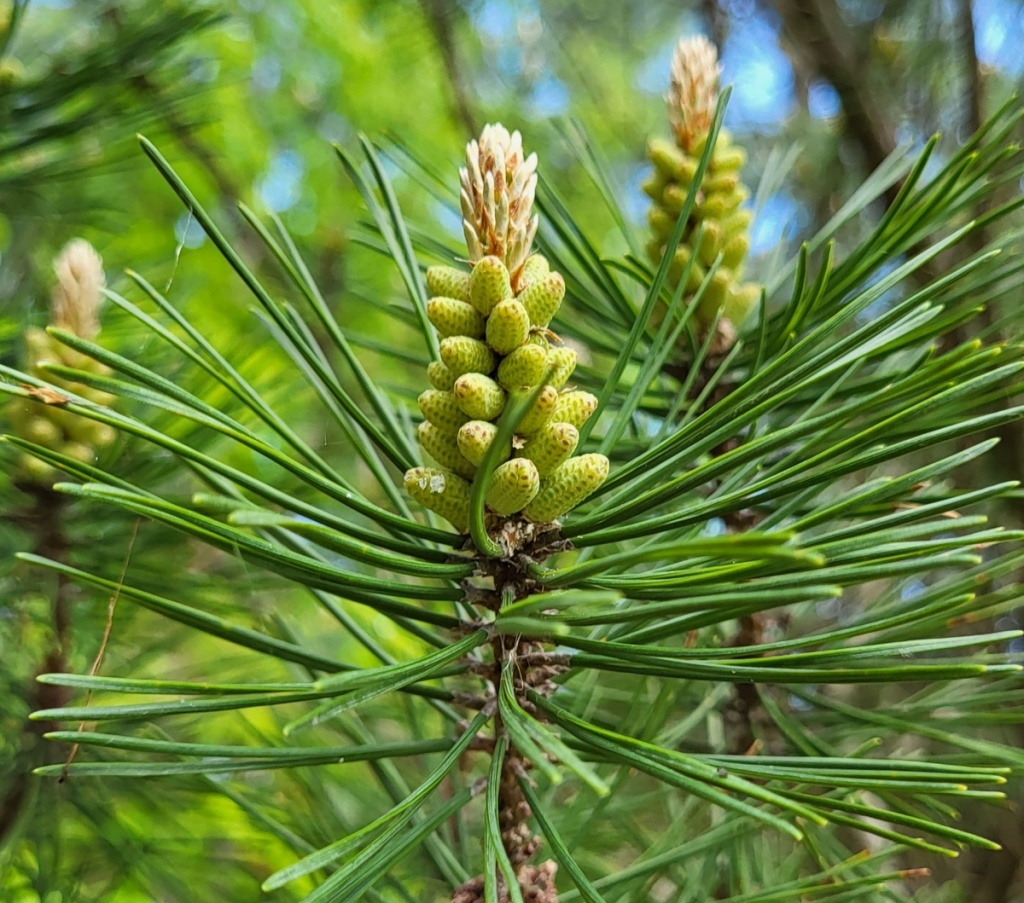
The male flowers of pine trees are called pollen cones because that’s what they produce. Pine trees are wind pollinated and great clouds of pollen can make it look like the trees are burning and releasing yellow green smoke each spring. Pine pollen is a strong antioxidant and it has been used medicinally around the world for thousands of years. Its health benefits were first written of in China nearly 5000 years ago and they were said to be numerous. You can still buy it today.

I love to see Robin’s plantain, which is one of the fleabanes, bloom in spring because it reveals all the flower lovers among us who, rather than mow it down, leave it to bloom. It is a common “weed” that comes up in lawns everywhere but it’s beautiful, so you’ll see large islands of unmowed grass with pink flowers poking up out of them on otherwise manicured lawns. For a week or so the weeds win and it always makes me smile. If only people could understand that it is these “weeds” that are normal, not their lawns. There was a time when grass was the weed, and it was dug up so the weeds, mostly used for food or medicine, would have more room to grow. The world must have been even more beautiful then.
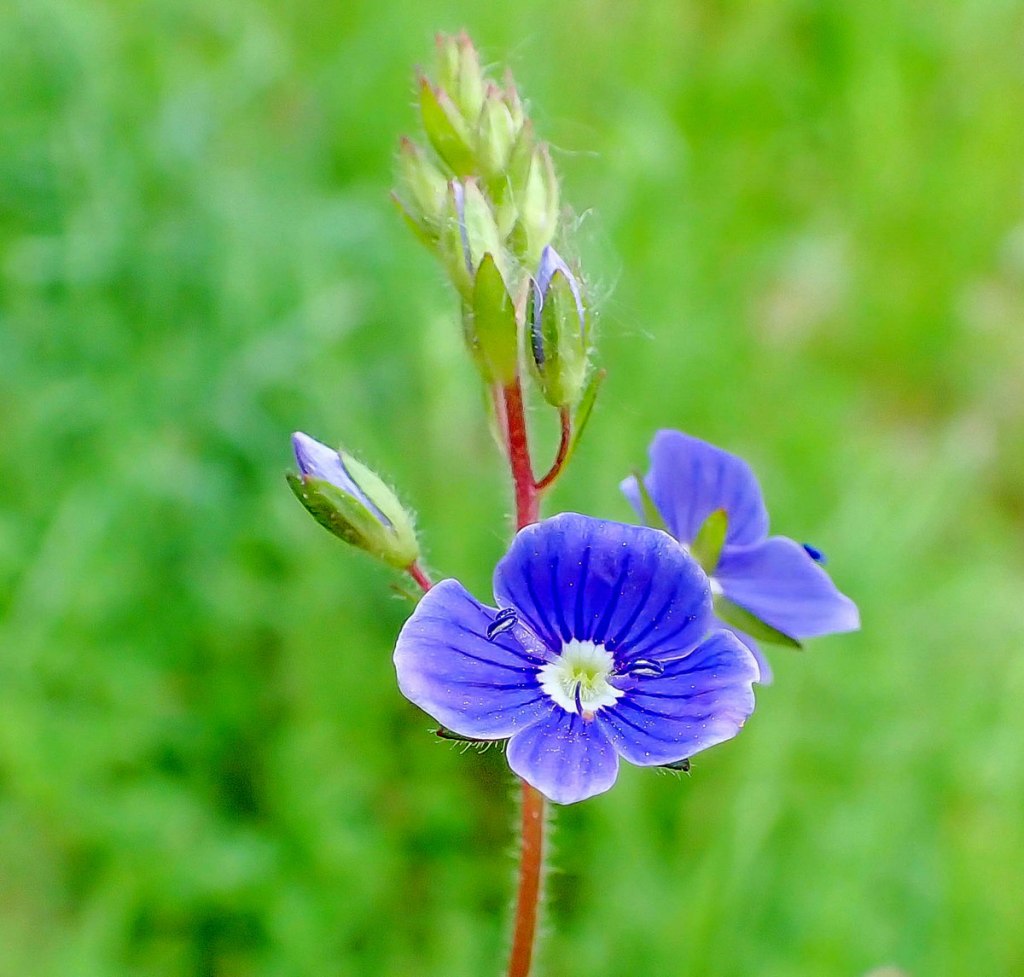
Germander speedwell is another beautiful weed that is one of the larger flowered “lawn” speedwells. It is also called bird’s eye or cat’s eye speedwell and is considered invasive but I always find it growing in the unmown grass at the edge of the woods, so I don’t know why it would be a bother. It can make rather large colonies so maybe if it got into the garden it could be a pest, but after a lifetiime in gardens I’ve never seen it in one, so I say just enjoy its quiet beauty and let it be. I would welcome it in my own yard.

Lesser stitchwort is blooming among the tall grasses. This plant is originally from Europe and is also called common or grass leaved stitchwort. It likes disturbed soil and does well on roadsides, old fields, and meadows. The common name stitchwort refers to the plant being used in herbal remedies to cure the pain in the side that we call a stitch. The stellaria part of its scientific name means star, and these beautiful little stars twinkle all summer long, just about everywhere I go. They and so many other weeds call me out of the shade of the forests and into the sunny meadows. There is great beauty found in both places but I learned as a boy that a meadow was much easier to walk through. When I wanted sweet and soft rather than rough and tumble I chose a sunny summer meadow.
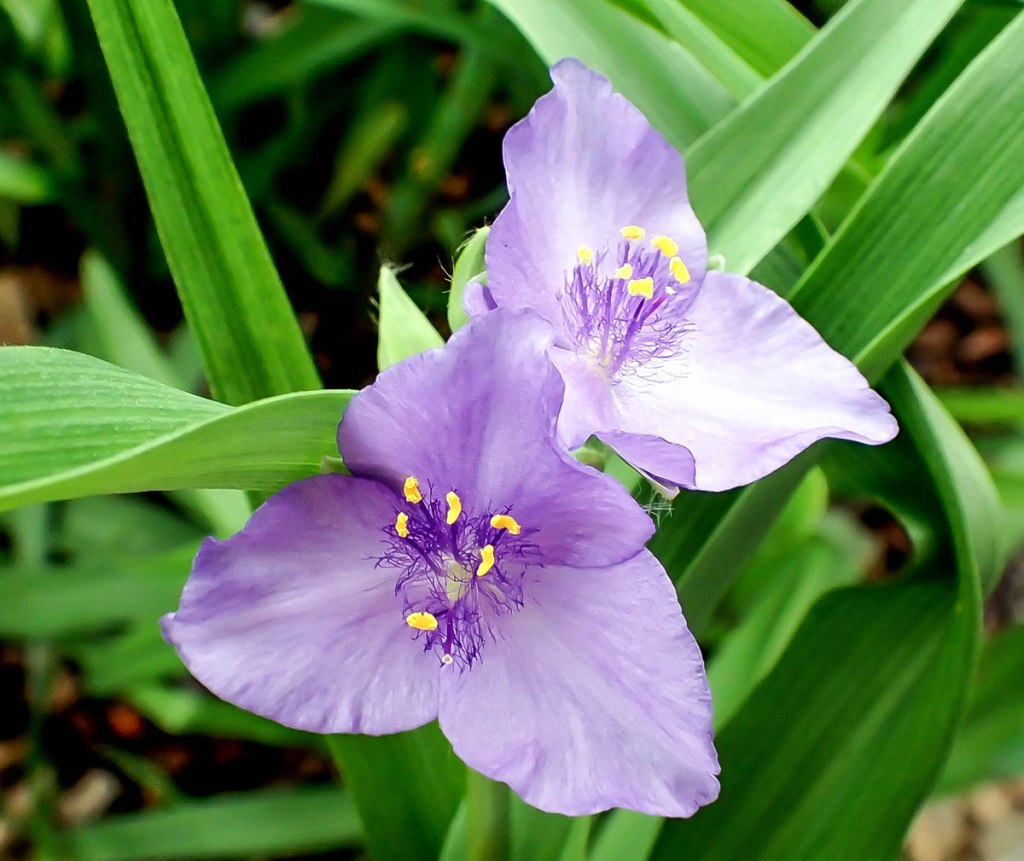
Tradescantia, also called spiderwort, has come into bloom. I took this photo because I thought I had found a pale blue one which I’d never seen, but my color finding software tells me it’s purple and I’ve seen plenty of those. I keep forgetting that I have a color blind helper app on my phone. It works well in the field but only if you remember to use it. The same could be said for the color blind glasses I have; they’re great, but you have to remember them.
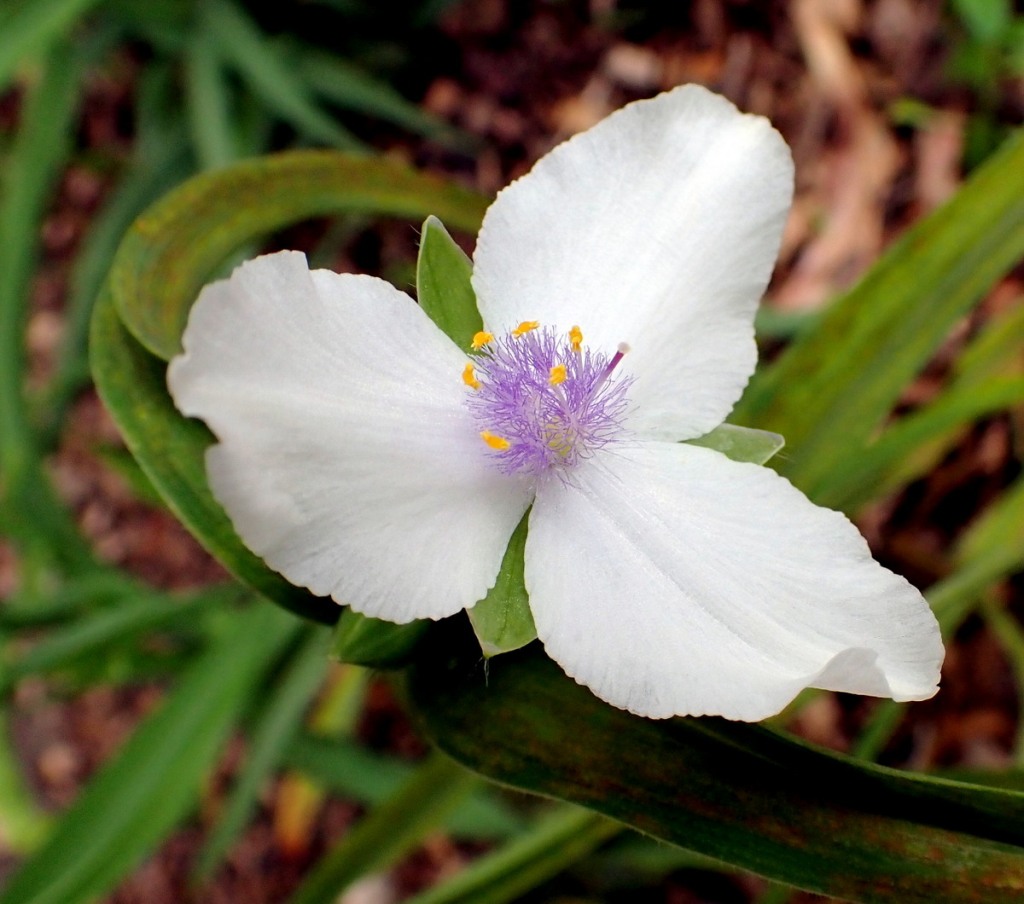
I was a little disappointed when I saw this white tradescantia blossom because last year it had blue streaks in its petals along with the blue in the center. It was a beautiful thing and it still is, but I do miss the blue in its petals. I looked at several different plants and all the flowers looked just like this one. If you’d like to see what I saw last year just Google “Tradescantia Osprey.” Apparently they can revert back to the solid white.
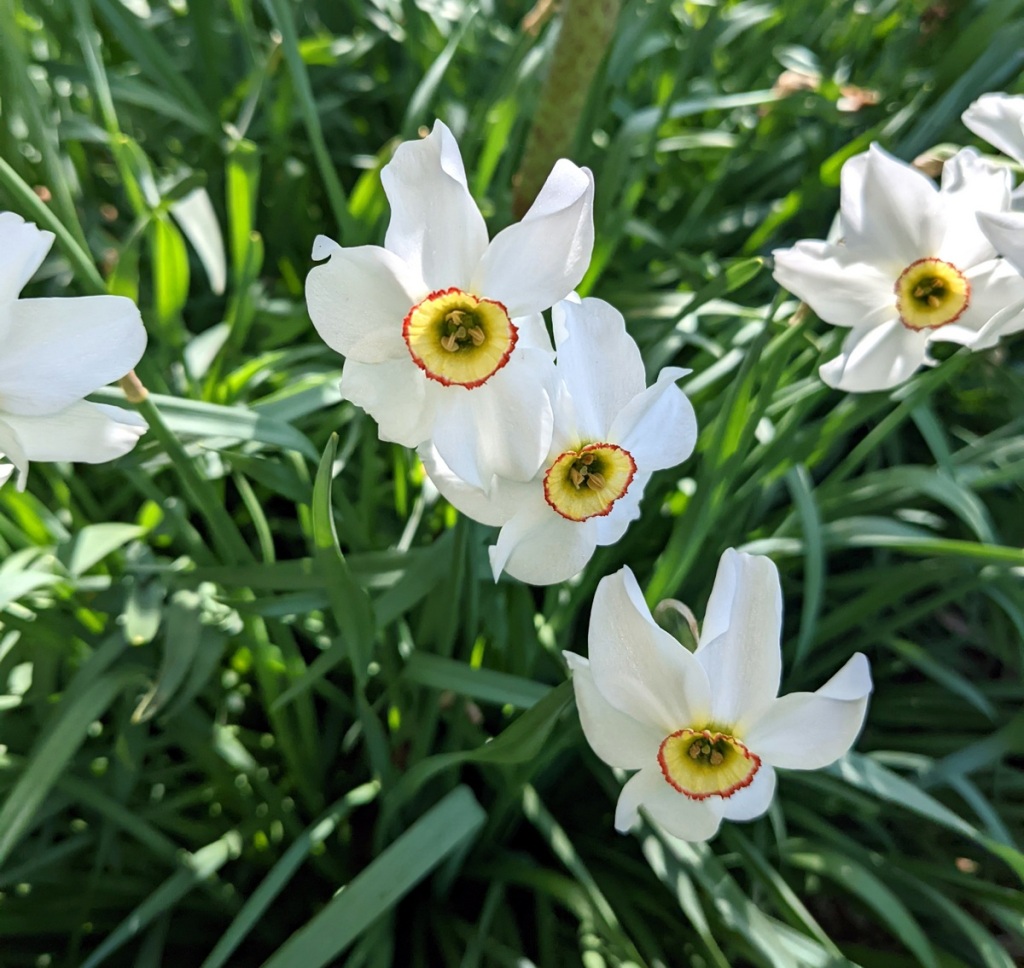
If you could somehow look back into the past to Ancient Greece at about 371 BC, you’d probably see this beautiful daffodil there. It’s called the poet’s daffodil and is such an ancient plant that many believe it is the flower that the legend of Narcissus is based on. It is one of the first cultivated daffodils and is hard to mistake for any other, with its red edged, yellow corona and pure white petals. It has naturalized throughout this area and can sometimes be found in unmown fields. Its fragrance can be compared to that of the paper white narcissus; so intoxicating that being in a room with 2 or 3 flowers in a vase can give some people headaches or make them sick. It blooms a bit later, just as most other daffodils are giving in. is also called the pheasant eye daffodil, for obvious reasons.
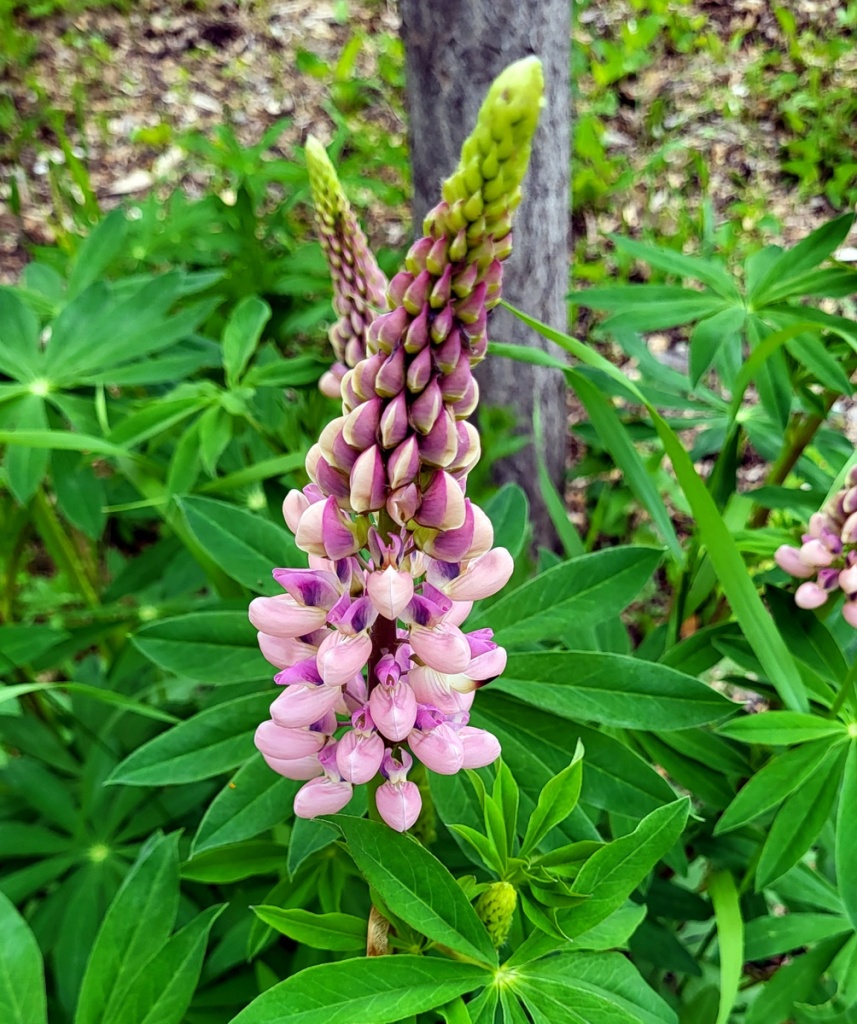
Lupines have just started blooming. I found this one at the local college. Anyone who has spent any time in a garden knows that lupines are in the pea / bean family. It’s a huge family of plants and you see its representatives just about everywhere.
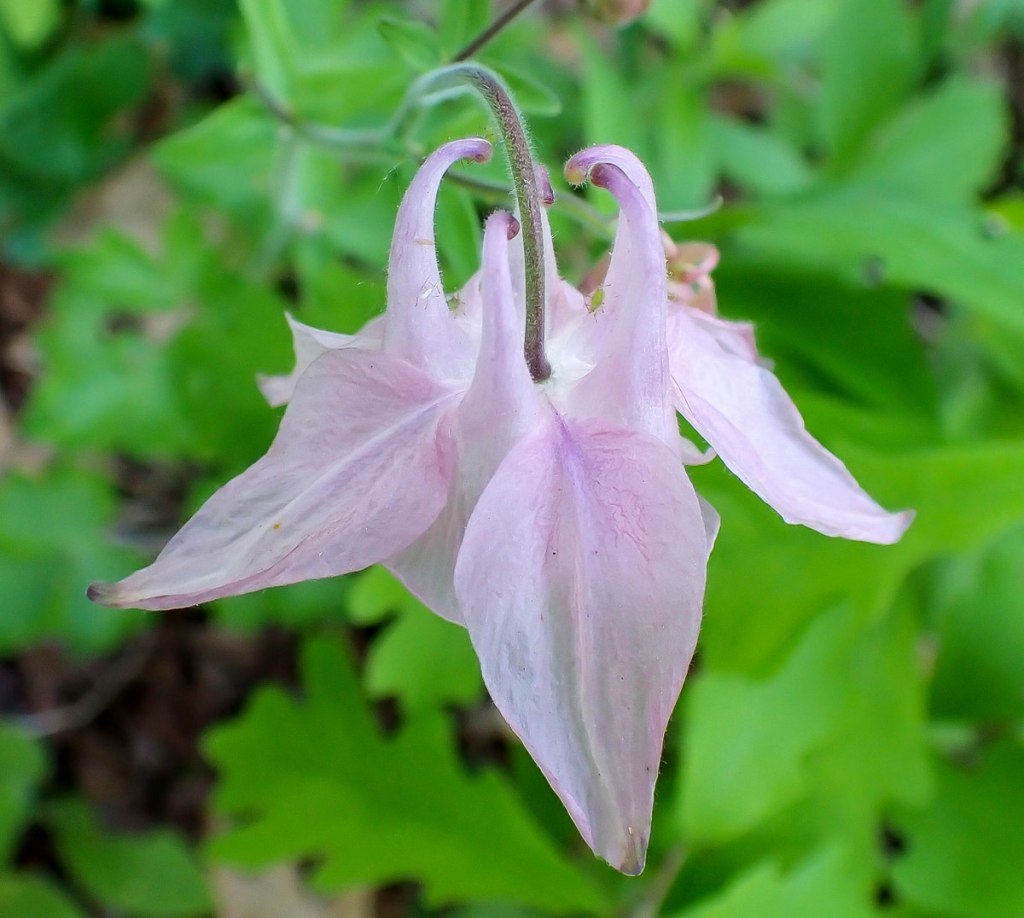
Five swans came together on the back of a columbine blossom.
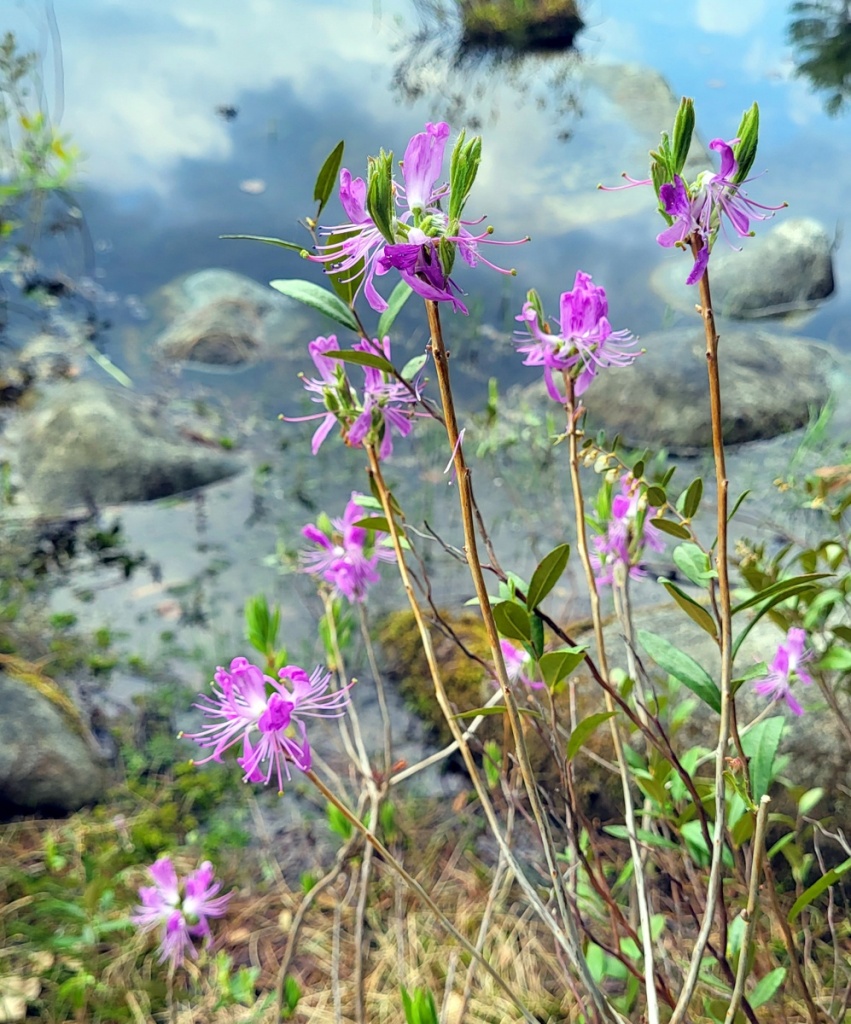
One of my favorite spring shrubs is the rhodora. It is a small, native rhododendron that loves swampy places. It’s native to the northeastern U.S. and Canada and its flowers appear before the leaves for a short time in late spring. By mid-June they will have all vanished. On May 17, 1854 Henry David Thoreau wrote “The splendid Rhodora now sets the swamps on fire with its masses of rich color,” and that is exactly what this beautiful little plant does.
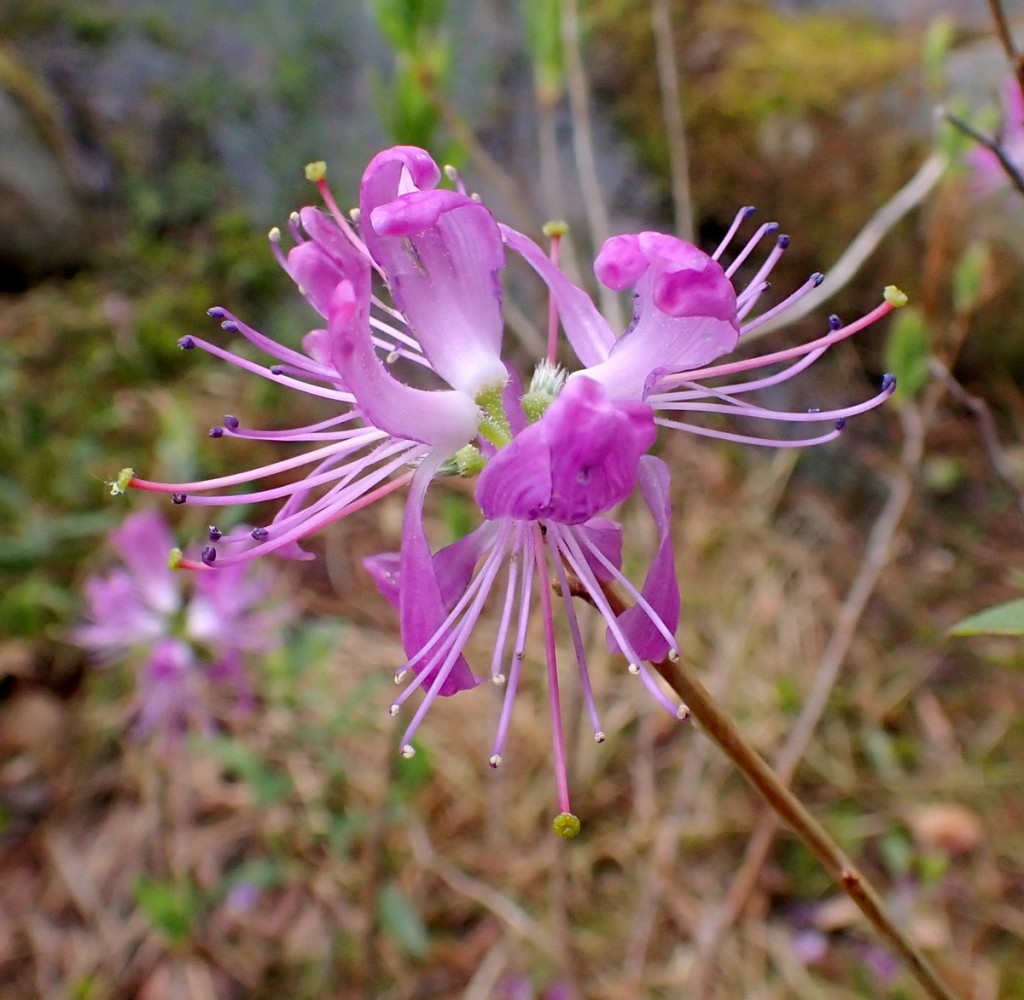
There’s nothing else quite like this flower blooming on pond shorelines in spring, so it’s close to impossible to confuse it with any other shrub. It often grows so close to the water that the best way to see it is by boat or kayak.
If you look the right way, you can see that the whole world is a garden. ~Frances Hodgson Burnett
Thanks for coming by.










































































































